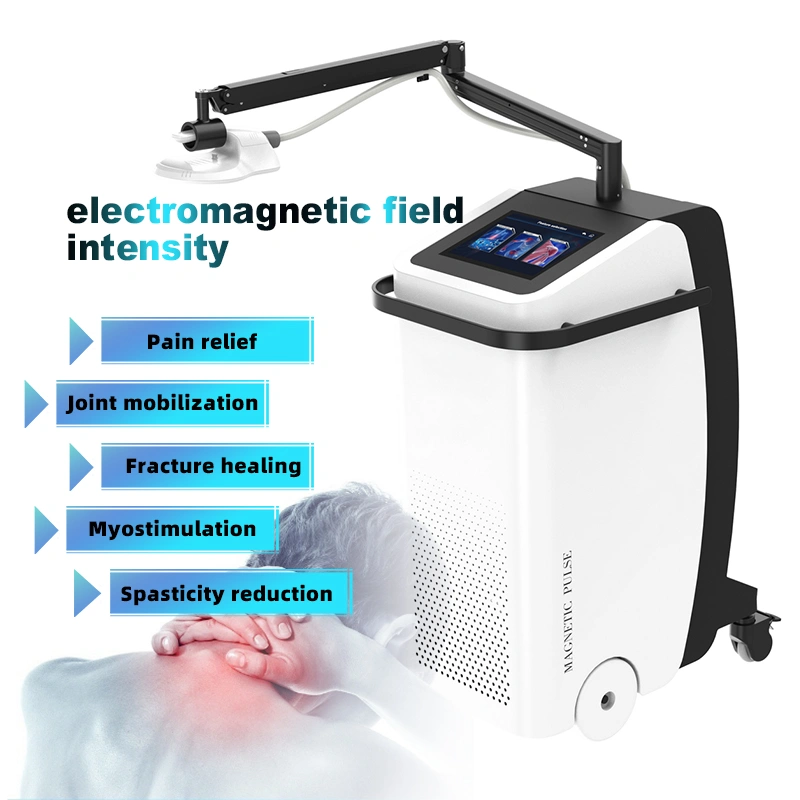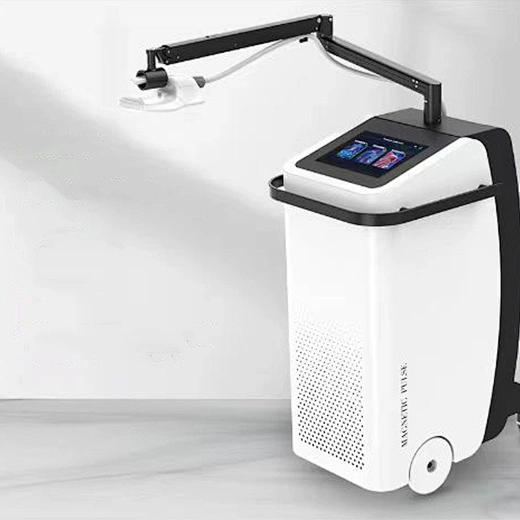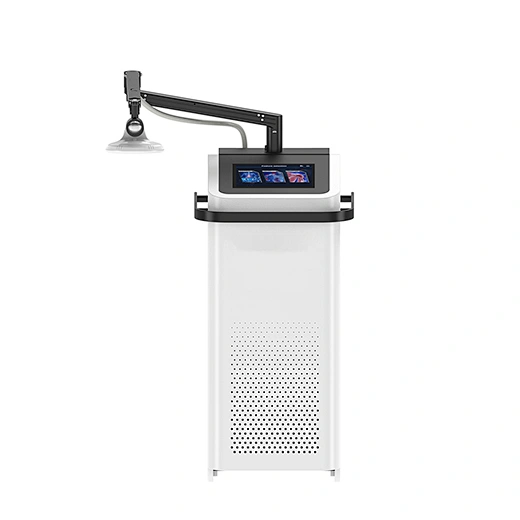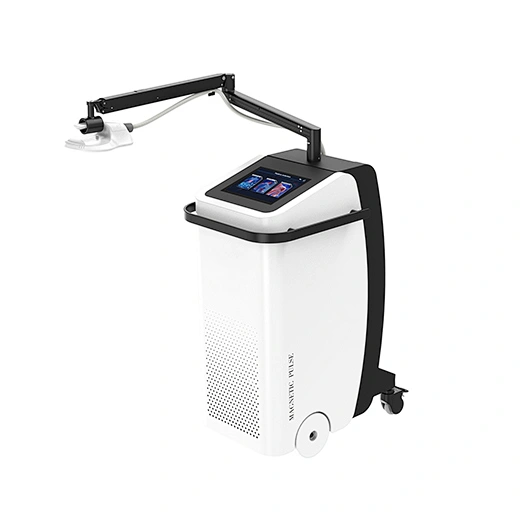
By applying the principle of biomimetic pulse magnetic resonance, com-bined with extremely low frequency electromagnetic induction technology and space electromagnetic field control technology, multiple sets of pulse
emission source arrays are recombined to emit extremely low frequency PEMF, change the atomic nucleus spin, and generate a new transmembrane potential on the cell membrane based on the original potential.This changes the charge distribution and hemorheology on the membrane surface, im.proves vasodilation function, promotes blood circulation, and ultimatelyim. proves bones, muscles, and Blood and other pathological conditions pro-mote good repair of microcirculation in diseased tissues.
Clinical application of laser pulse magnetic therapy device
1. Shoulder periarthritis: By using magnetic stimulation to stimulate the anterior deltoid muscle.trapezius muscle, and supraspinatus muscle of the patient, the pain points can be manually located first. Strong magnetic stimulation can penetrate 7-10 cm into the tissue without significantly reducing the in. tensity of magnetic therapy, thus reaching the deep muscle tissue of the patient. 2.Lumbar disc herniation:Laser magnetic stimulation has great potential for painless penetration of deep muscles and neuralstructuresin the treatment of painful diseas. es, which means that non-invasive pulse magnetic stimulation alone can safely and effectively alleviate clinically challenging and stubborn pain. Laser has the ability to promote microcirculation, dilate blood vessels. increase blood flow,eliminate swelling, and has significant anti-inflam- matory and repair effects. For lumbar disc herniation, it can effectively alleviate pain, promote the recovery of lumbosacral nerve root injury. enhance muscle strength, and improve the patient’s motor function and daily living ability.
3.Knee osteoarthritis: Laser can enhance the blood circulation of knee joint bone tissue and im-prove local nutrition, By using a strong magnetic field, it is beneficial forthe regeneration of bone tissue cells, improving the bone density of thelocal bone in the knee joint, and the micro current it generates has a pro-moting effect on the growth of chondrocytes, thus facilitating the repairof knee joint cartilage tissue; Magnetic field can reduce the excitability ofperipheral nerves in the knee joint, block sensory nerve conduction, andincrease pain threshold. 4.Cervicalspondylotic radiculopathy: Due to the degeneration of cervicalintervertebral discs and degenerativechanges in surrounding soft tissues, nerve roots are stimulated and com-pressed, leading to local circulatory disorders and the formation of asep-tic inflammation, resulting in pain. Chronic pain may be an excessiveplasticity change between synapses in the pain transmission pathwayleading to an increase in pain sensitivity. The low-frequency stimulationof the peripheral pain site by laser magnetic stimulation not only produc-es a long-term inhibitory effect on synaptic connections in the paintransmission pathway, but also selectively stimulates the peripheralcoarse fiber nerves. Through the gating effect of spinal pain transmis-sion, it blocks the transmission of C-class fine fibers that transmit painand achieves better long-term analgesic effects.
5.Femoral head necrosis: High intensity magnetic field suppresses the steatosis of bone marrow cells in the femoral head, effectively improves microcirculation in the femoral head, reduces pressure in the bladder joint cavity, promotes the growth and functional repair of osteoblasts. Sequence: The first reliet after magnetic therapy is the disappearance of soft tissue edema around the femoral head, followed by bone repair. 6.Earlyintervention in orthopedic diseases: A strong magnetic field can penetrate high resistance structures such as bones, adipose tissue, skin, clothing, or plaster, allowing for painless and non-invasive stimulation. Especially for some other situations that are difficult to undergo physical therapy, such as fractures, plaster casts,infections, ulcers, swelling or discomfort in limbs (leg stimulation is required to prevent deep vein thrombosis), exercise, FES and other methods are no longer feasible at this time, and laser magnetic therapy is still applicable.In addition, for deep proximal nerves that are difficult to activate with electrical stimulation, magnetic stimulation can acti- vate painlessly, which is very useful.
7.Postoperative joint stiffness: Muscle, tendon,and joint capsule contractures caused by jointimmobi.lization after trauma, as well as scars generated during joint injuryrepair, can easily lead to joint stiffness after joint trauma. lmprovingjoint range of motion,especially flexion and extension range of motion,is an important part of rehabilitation treatment for elbow stiffness aftertrauma. Laser magnetic therapy for stiff soft tissues in joints can effec-tivelyimprove local microcirculation,increase excitability of nerves andmuscles, alleviate tissue contractures, and facilitate the recovery ofjoint flexion and extension range of motion and joint function.






